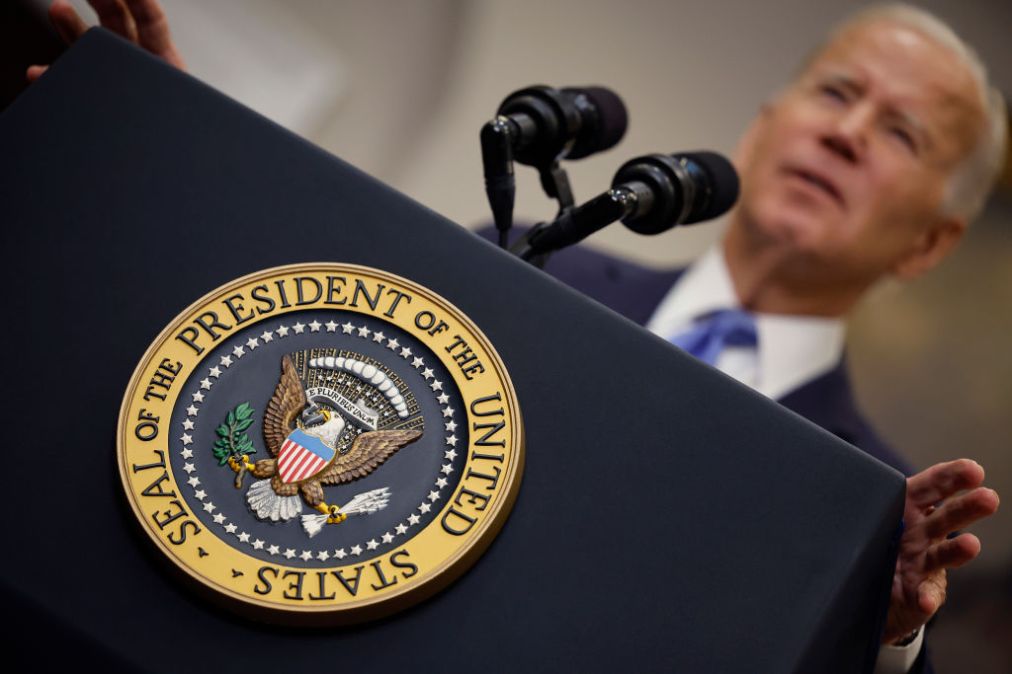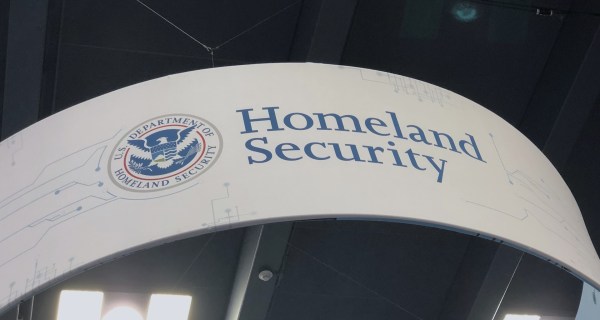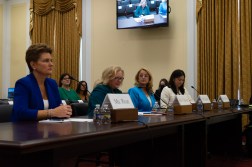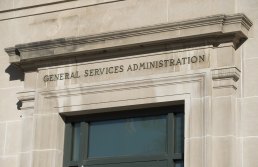- Exclusive
- Modernization
Top Biden tech priorities stalled by misalignment between federal IT teams

A significant lack of prioritization and strategic vision from key technology leaders at the White House’s U.S. Digital Service, Office of Management and Budget and the General Services Administration has caused massive delays in critical improvements to government websites that millions of Americans use every day, according to multiple current and former government IT officials.
Five current and former federal officials familiar with the matter said the “failure” of senior leaders to prioritize digital experience projects — central to the Biden administration’s federal technology agenda — have caused severe delays to implementation of the 21st Century Integrated Digital Experience Act (IDEA Act), which Congress passed in 2018. In particular, they told FedScoop that a lack of coordination and consensus between the three agencies has stymied progress.
Using technology to improve American citizens’ experience with government services has been a key strategic priority for President Biden, who signed an executive order on customer experience in December 2021. Later this summer, the administration is expected to provide further guidance to federal agencies on how to fully implement the IDEA Act’s digitization and customer experience sections.
Speaking with FedScoop, the officials expressed concern that USDS, led by Mina Hsiang, and GSA, led by Robin Carnahan, in the past year have focused on small, niche projects while deprioritizing big ticket items like redesigning government websites, setting tech policy standards and improving agency branding. One such niche project, cited by two officials, was a public benefits studio run by GSA’s Technology Transformation Services team, which is a pilot text notification system.
Some of the five current and former officials spoke on the condition of anonymity because they are not authorized to speak publicly.
One currently serving senior Biden administration official said the two agencies “keep saying they don’t have enough people, they don’t have enough resources.” They added: “[USDS and GSA] have been giving us the run around for two years now — it feels like flimsy excuses. We’re just screaming into the void while they’re off working on their own stuff.”
Another senior IT official added: “GSA and USDS don’t want to be known for fixing websites because Healthcare.gov was a failure. And they want to get away from a headline that they fixed more websites. So what they do is they have very good high level connections in the West Wing, and they have doled out their people to small pet projects, across policy councils.”
“The message from leadership is we’re here for a short period of time, so let’s just do low-hanging fruits and easy, quick projects,” a USDS employee familiar with the matter told FedScoop. “If our priority was to do the most good for the most people we would be doing different big projects that would impact a lot more people.”
An internal USDS “current projects” document obtained by FedScoop shows that the agency has for more than five months had at least eight employees focused on “IDEA Act Policy Consult,” reviewing drafts of a policy memo on the bill but with no actual implementation of the law. Furthermore, two federal IT officials highlighted emails that show that the GSA has ignored multiple requests from OMB to prioritize IDEA Act implementation work.
Commenting on IDEA Act implementation, a former senior IT official who worked at OMB and GSA said: “It’s clear USDS and GSA are working on small-ball projects, nothing transformational or significant, and OMB is enabling them because there’s so much in-fighting and personality-driven conflict that is stopping them from delivering on the critical work of customer experience overhauls and IDEA Act implementation.”
During an interview with FedScoop, Federal Chief Information Officer Clare Martorana, who is the administration’s top federal IT official and a former member of USDS, said that there is great opportunity to improve implementation of Biden’s tech agenda and stressed the need for leaders at USDS, GSA and OMB to work together more effectively.
“It’s my statutory obligation as Federal CIO to deliver on the 21st Century IDEA Act. To do it, we will need more alignment with our budget colleagues, tech delivery teams like the U.S. Digital Service and tech partners like the General Services Administration — the engine of tech investments, tech policy, tech delivery, and tech standards and services — to operate as one,” Martorana told FedScoop after a Labor Department Federal Tech Day conference in May. “When we work together — doing the most good for the most people in need — we can drive impact and scale innovation across Government.”
Spokespeople from OMB, GSA, and USDS responded to questions from FedScoop with the following joint statement: “Digital teams across government—including OMB and GSA—are working hand-in-hand to deliver simple, seamless, and secure digital government services that the American people deserve.”
They added: “In alignment with the 21st Century IDEA, the Administration has provided tools to make government websites more friendly and accessible—like refreshed resources on Digital.gov and new accessibility updates to the U.S. Web Design System. There will soon be new, clear guidance provided to agencies to drive continued implementation of the 21st Century IDEA, delivering on a goal the previous Administration left by the wayside. It’s never been more critical that agencies are working together to deliver effective digital government for the American people, and that’s exactly what this Administration is doing.”
The IDEA Act, which became law in 2018 under the leadership of Rep. Ro Khanna, D-Calif., requires agencies to upgrade their websites, replace paper-based forms with digital- and mobile-response options, and create plans to expand the use of electronic signatures. No significant progress on implementation of the act was made during the Trump administration.
The law overall strives for a more consistent, mobile-friendly user experience across federal digital services and websites. It requires agencies to take stock of their public-facing digital assets and streamline and modernize them for the 21st century. Such projects usually require federal agencies to work closely with USDS and GSA to obtain specialist expertise and additional resources.
According to the current and former officials who spoke with FedScoop, implementation of the law has been directly delayed by a lack of prioritization among USDS and GSA leaders. One current federal official pointed to the volume of demands placed on USDS and GSA by the White House as one possible reason for the agencies’ “lack of focus.”
The official said: “The White House says we need a new website for this new initiative that’s launching next Tuesday and they often times have to scramble to work on things that just get lobbed at them. So they get very distracted by these projects, like squirrel squirrel squirrel – to see things from their perspective, right?”
Two USDS employees told FedScoop some employees within federal tech delivery team are growing frustrated by the lack of vision and uncertain priorities, particularly regarding to large digital transformation projects and IDEA Act implementation.
“On the inside it seems like there’s more than enough resources and people on staff to execute and actually get some work done on big projects that impact millions of people. I just think that the work that could be done is not what’s being prioritized,” a USDS employee familiar with the matter told FedScoop.
Four of the officials familiar with the matter placed responsibility for the lack of traction in the Biden administration’s digital modernization efforts squarely on the top leaders within GSA, USDS, and OMB.
“The failure is on [OMB Deputy Director for Management] Jason Miller, [USDS Administrator] Mina Hsiang, [GSA Administrator] Robin Carnahan. It’s the truth. If they don’t align and start executing, then Congress should be calling them up and asking them hard questions,” a senior federal IT official told FedScoop.
“How come they’re not working on the things that actually would drive critical change for Americans’ digital experience with the government? It breaks my heart, I’m ready to cry almost,” that senior official added.
Some officials frustrated with the lack of movement on IDEA Act implementation and digital modernization efforts have proposed fresh guidance from OMB — such as the guidance the agency is expected to deliver later this summer — that would compel agencies to abide by the legislation, which lawmakers have been pushing for since 2021.
”We’ve been able to navigate for many years in government using soft power by just working collegially with our counterparts and just trying really hard to get along and get s*** done. Now, we realize we actually have to use statutory authority to compel people to do things. That’s OK, though,” a second federal IT official told FedScoop.
In a joint statement, OMB, GSA and USDS said: “Digital teams across government—including OMB and GSA—are working hand-in-hand to deliver simple, seamless, and secure digital government services that the American people deserve. Login.gov, the single sign-on for government services, has expanded to over 70 million user accounts and launched a partnership with 18,000 US Postal Service locations to ensure Americans have easy access to the services they need.”
They added: “The Administration has taken major steps to protect Americans online by modernizing government certification for cloud service providers through FedRAMP and enhancing the security of the software supply chain with agency guidance. Digital teams are modernizing agency services—creating a redesigned VA website and mobile app to help over 12 million veterans more easily access health care and benefits and working with the IRS to modernize their online capabilities to better support taxpayers.”






